
Dr Manjula, of the University of Agriculture Sciences, Bengaluru, discusses exclusively with www.www.coorgnews.in about some of the finer points involving the ‘out turn test’ to determine the quality of beans before they are procured by the traders.
Earlier, the prices of coffee were fixed based on the demand and supply in the international market. But now the quality of seeds has become an add-on factor to determine such prices.
The concept of out-turn analysis started in the international market during late 1990s and early 2000 when there was a glut in the market owing to large scale export from all the coffee growing regions without any leash on the quality. Keeping this in view at the International market the concept of out-turn was introduced, also known as Green Bean Equivalent (GBE) to comprehend the quality of the coffee before purchasing from producers.
On May 21st, 2004, the International Coffee Organization (ICO) made it legitimate practice by passing a resolution known as Resolution 420 which is applicable only to beans. Accordingly, 300g of Arabica beans can possess 85g of defective beans whereas, 300g of Robusta can posses 150g. Initially it was in east African region the concept of out-turn was present and gradually it extended across the world. As per the ratio the out turn for Arabica and Robusta was fixed at 1:6 & 1:5 respectively.
For a lay man, it means there should be one kg of beans from at least 5 or 6 kgs of berry/cherry.
So how can growers ensure good out turn to get maximum prices? It is easier said than done as it involves adoption of different best practices.
Recent international research on coffee plantation states that to get ‘A’ grade coffee beans it is not only necessary to have a good genetic background for the plant but other factors also play a vital
role, viz., number of healthy leaves in the plant, leaf area, thickness of primary branches, number of secondary branches and their diameter, bush spread, inter-nodal length, age of the plant and quality of fruit produced. All these can be free of defects if only required amount of nutrition, light, moisture and micro-climate is provided. Here even agronomic practices for the plantation demands skilled labours especially for pruning, side shoot removal etc., or else it may also affect the produce.
Coffee plant needs all the 16 nutrients, especially 6 major (nitrogen, phosphorus, potash, calcium, sulphur, magnesium) and 7 minor (copper, zinc, manganese, iron, boron, molybdenum, chlorine) nutrients.
These nutrients are not only to be provided through chemical fertilizers but also through green manures and organic manures. For good quality of cherries/beans the important nutrients required in right amount are phosphorus, calcium, sulphur and boron. All these nutrients are provided through soil medium so it is necessary to get the soil tested for nutrients periodically and supplement the required quantity through correct form, amount and right time.
On the basis of this GBE even the pricing should done uniformly all over looking to the international market rates. Right now the traders operating in these traditional coffee growing areas of South India fix the GBE or out-turn ratio which is like based on the 50kg standard bag of coffee marketed. The 50kg should yield them a minimum of 26.5kg out-turn i.e., for robusta the ratio would be 2.65:5 (2.65kg of beans for 5kg cherry) while the international standard according to ICO is 1:5 or even upto 1:7.
Also along with this there is need to have a huller of uniform make to get similar out-turn/ output in the trading centers than each one calibrating the ratio according their convenience or availability of
inputs. Henceforth for south India GBE ratio has to be fixed for coffee based on region, variety and sampling procedure which also to be fixed for uniform results which needs thorough research and
interventions by the concerned for the up-liftment of the farmer especially small and marginal ones.
Tips to make your GBE better!
- Immature, greenish, over dried, over ripened cherries give poor out-turn. So grading to be donebefore drying.
2. The unequal distribution of nutrients to all cherries in a coffee plant, rust affected and berryborer infestation also lead to poor out-turn. So management of nutrition, pests and diseases play a
vital role too.
3. The growers must ensure they have the right variety and quality coffee plants/seedling that suit their region. Obtain plant material from registered sources.
4. The picking should start when the green cherry/fruit turns pink or pinkish red. But lot of factors also play role in the timing of maturity. More the number of picking lesser will be the outturn
as the cherry ripens, more it adds to the weight of pulp & skin not to the beans.
5. Method of sampling has been standardized in some international coffee growing areas which needs to be implemented here in South India. Promotion of Sustainable Arabica production practiced in North West region, Cameroon can be incorporated. There a sample of 0.5kg is taken from the every 50kg bag and it is pooled and hulled. A random sample of 300g is taken from the pool and tested for defects and outturn results.
6. Dry weather prevailing while flower to fruit set and harvesting time also lowers the outturn ratio. Improving shade can sometimes avert such effects.
7. Providing water at right quantity during fruit set increases the yield but may reduce the outturn and vice versa also shall happen as all these depend on in built nature of the plants in the coop.
8. The drying of cherry or seed to international standard is necessary. The moisture in the coffee should not be lesser or over dried i.e., moisture should not fall below 8 per cent, or more than 12.5 per cent. The moisture content in the seeds is measured by the standard moisture meters like Kappa and Tecator moisture meter as per ISO 6673.
(Dr Manjula is with the University of Agricultural Sciences, GKVK, Bengaluru. Please give your feedback at manjula.poovaiah@rediffmail.com)

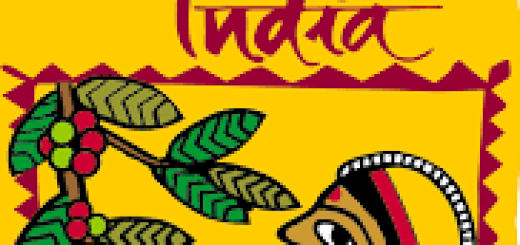

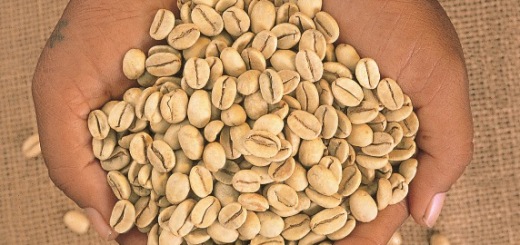

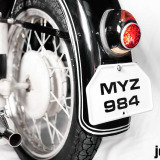


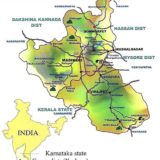


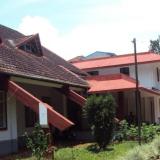

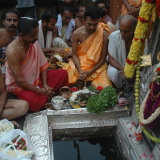










A farmer can hand pound 500 grams of dry cherry,remove the husk & weigh the clean coffee to know out turn his coffee & demand price according to his out turn. It is a simple process. Instead some vested interests r making a hue & cry about it. Ps: hullers do not bother about grades but gross out turn
Fairly good article. Clarification required on 1. What are defective beans. Are they blacks and bits? 2.Isn’t pberry a defective bean?3.More the pberry better is the grade of coffee. Pberry has premium. Doesn’t the presence of more pberry add value to the outturn?
Indian shade grown coffee is internationally used as blender for the Brazilian and other non shade grown coffee, which has more strength and no aroma. Internationally who fixes the benchmark for outturn.? The less than 3% coffee grown in India of the total production in the world is the best blender with highest premium in the world. The benchmark fixed by the Indian Coffee Board is whimsical and highly subjective. If there are efforts to fix parameters of out turn exclusively for the South Indian grown coffee , it seems a ploy by the trading community/cartel.
Starbucks specifications differ from Maxwell House and other coffees. There needs to b a very objective based assessment of out turn for different strains like Peridinian, Selection 274, Congenesis, Kent, catimore etc. Who validates? In Coorg, even the small time traders owning hullers or not talk abt the “low” outturn and fix lower buying price. Long time ago I had interaction with one Dr Basavaraj, of Coffee Board, who turned a cold shoulder abt the above aspects and talked only abt the “Bayers coffee roaster” for better cup quality of coffee. Planters, in the pre 1991 era, used to pool their produce ,coffee, with the curers on outturn basis. Is it still prevalent? If so what benchmarks they have for outturn??
Defective beans include blacks (Colour grading) and bits also (more than half the size of bean so on)…. more information on this can be seen in thecoffeeguide.org, Coffee trade: New York Coffee exchange, also under ICO resolutions…Peaberry alone will not contribute to the outturn unless each is sturdy with good formation and AA, AB, Peaberry and lower grades .. the grading of GBE. Internationally the ICO is to do… but now some domestic and international traders are …. No the pooling system does not exist anywhere now, people sell through front door take the payment and exit through back, whereas in those system of quality testing and selling process things had to wait. All this collapsed after people lost faith in giving their produce to Coffee Board (pooling system). Even I spoke to few in Coffee board on this but they seem to be reluctant to address the burning issue?????
Thank you so for this information doctor. Based on this information, I am trying to teach some of my students in Uganda about out turn.You cited somewhere that for 5 kg of cherry you get 2.65 kgs for Robusta. Does this also apply to Arabica? Because I agree with the robust to be around 2.5-2.7 kgs depending on the region but for Arabic I am not sure.
This 2.65 is in respect to robusta grown in our hilly region of Karnataka… but it varies from place to place and with respect to arabica too….In Uganda also do they follow the turn over based pricing while procuring the coffee?
In Uganda we do follow the turn over before procuring the coffee.
Dr. Manjula it’s a pleasure that you’ve extended valid info to the coffee growers! The present labour crisis,in Coorg ,lack of skilled and efficient labours altogether is bringing in more chaos to the Plantation.Nothing is manageable as before ,time constraints and work included. Everyone is in a hurry to finish their work on time due to the inadequate,uncertain labour supply. Adulteration is seen in the quality of fertilisers.Genuine organic methods are working out expensive due to the current coffee price !All this is directly or indirectly affecting qualitative supply of coffee. I can hear the traders predominantly blurting the word ‘OUT TURN ‘ each time they come to buy coffee,which wasn’t important years ago . The farmers out here ,amidst these predicaments have got into an acumen to get it right now 😊(Out turn mania )
Nice information
Thanks Dr Manjula for emphasizing how important it is to achieve overall quality which has direct impact in out turn.Request you to write about how to go about incorporating minor nutrients effectively which I am afraid is not being addressed seriously by many.Thanks.
Dear Dr. Very nice article. OT is very important factor for the purposes of getting better revenue to the Planters and good coffee for the buyers & Roasters. with good practice of Integrated Nutrition Management we can increase the yield and OT and good quality of coffee. apart from INM, Foliar spray to Rpbusta and Arabica plants helps in increasing the OT and yield. Also many planters loose their value at the farm level itself; for example they over dry the coffee or under dry the coffee. Many planters don’t use the moisture meter to check the correct Moisture before storing. Over drying leads to revenue loss to the planters and excess moisture spoils the quality of coffee. medium and large planters should spend more time in marketing their coffee in proper method to increase the revenue instead of selling to local agents where in all the efforts taken at farm level goes in vain. ( views expressed are personal).
Outturn is a important factor in coffee trade
At the same time the larger company buyers of cherry coffee do not have on spot assessment of OT
Hence you are at their mercy
Still there is no uniform practice